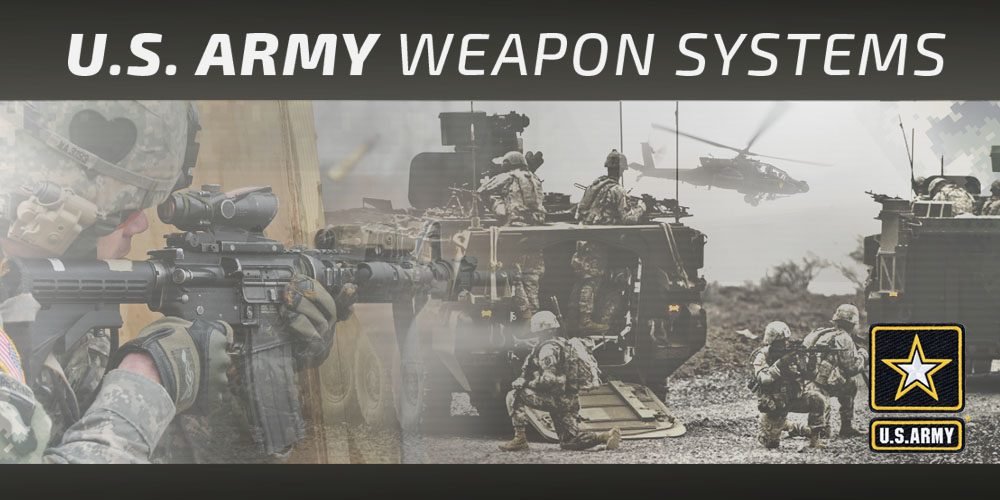Army’s Basic Illusions Gone; Time For Futures Command
Posted on

This is the second op-ed we’ve run by serving Army officials about how and why the service should be restructured so it can build its next generation of weapons and do it effectively. The Army, not known for going public with its internal (sometimes religious) debates, appears to understand that after getting so much wrong since the end of the Cold War (start with Comanche and go through Future Combat Systems), it really needs to listen to a larger world. Dear Readers in Congress, industry, the Pentagon and in the wider public, this is your chance to help the Army get things right. All them what you think. Read on! The Editor.
American playwright Arthur Miller once observed that an era has reached its end “when its basic illusions are exhausted.”
Congress, the defense industry, academia, and the U.S. Army all believe the Pentagon must fundamentally change the culture and performance of its acquisition enterprise after decades of tweaks and inertia.

Col. Richard Hough
Since Vietnam, the most significant reform to the Defense Department, the United States Army and Army Acquisition Enterprise was the Goldwater-Nichols DOD Reorganization Act of 1986. It changed who controlled budgets, project management, research and development, and aspects of modernization. Since then, numerous institutional adaptations and reorganizations have been initiated, many of which have led to familiar conditions: cumbersome spans of control; complex communication and procedural (bureaucratic) structures; difficulty prioritizing competitive programs and budget requirements; decreased accountability and effectiveness; and, disconnects between futures and acquisition procurement strategies, to name a few.
For the Army those conditions materialized into “a lost decade of procurement” marked by, “reductions in modernization, procurement, and RDTE funding”; and a “wave of [OSD] requirements,” according to Lt. Gen. Mike Murray, Army Deputy Chief of Staff (G-8). While the present Army reorganization should address many of these concerns, a critical purpose of any new command, regardless of structure, is to obtain a central authority for translating futures and modernization activities into a smart acquisition strategy; activities that haven’t been under a single command since 1940.
With Futures Command
While the existing structure managed victory on global battlefields from Grenada to present operations, the U.S. Army has determined that long-delayed reforms in acquisitions require the most significant reorganization of modernization functions in 40 years. Because the overmatch our Army has enjoyed for the last 70 years is closing quickly across all domains of warfare, it is clearly understood that early successes are going to be essential for the new Army Futures Command.
While some may think this new command is a strategy of creating a new bureaucracy to address bureaucratic cultural concerns, the new command will be challenged to:
- Streamline the requirements process, which averages three to five years, and major weapons systems development, which averages 10 years. A major contributing factor for such lengthy delays is the current command structure requires dozens of flag officer board and committee hearings within multiple multi-star command to approve requirements (if one includes the Joint Capabilities Integration and Development System).
- Overcome a risk-averse acquisition culture optimized for individual and organizational outcomes within stove-piped organizations, thus requiring synchronization at HQDA level.
- Provide a vision-to-victory or futures strategy that alleviates tensions between present requirements and future readiness.
- Improve integration of operational concepts into acquisition strategies, presently determined and developed by multiple disjointed multi-star commands. At present, there is no single point of contact (command) with ownership of futures to formulate consensus on a long-term procurement strategy within the United States Army.
- Overcome the stale reforms and existing R&D structure by leverage industries leadership of advanced technologies and modernization in order to decrease procurement and acquisition timelines, increase innovation, and, address cultural “contrast in approaches to research and development that differentiates defense firms from their commercial counterparts.”
- Improve and balance the research and development strategy; establish conditions for a “succeed-fast” and “fail-fast” strategy throughout the defense acquisition life cycle.
- Elevate the confidence of stakeholders, particularly Congress, in our ability to manage major Army defense acquisition programs. For the Army, recent “failures” have cost tax payers billions and are the most obvious reason why oversight and authorities is overly centralized (by Congress). Since 2011 alone, the Army has ended 20 programs, delayed 125 and restructured 124 others.
- and, ultimately, establish a wartime acquisition enterprise capable of rapid adaptability to threat capabilities today and in the future.
On this last point, recent acquisition enterprise efforts to synchronize and create a shared visualization stem from a current state assessment that “acquisition’s underlying problems are exacerbated during conflict, when warfighters are in harm’s way. Therefore, the natural tendency has been to work around the system rather than fix it,” according to a previous Army Futures Studies Group cohort. Reflecting on these truths, the Army has determined that now is the time to fix the system, as “wartime adaptation against a peer adversary will require capability generation to be exponentially faster than it was for recent operations”, according to Maj. Hassan Kamara of the Army Future Studies Group.
So the Army has started its most significant organizational redesign in four decades to meet futures and modernization challenges to do its part. Let’s look at how it got here.
A Short History of the Army’s Modernization and Futures Enterprise
Since the dawn of World War II, the Army has maintained a flexible organizational structure to meet significant overseas and continental commitments and challenges. Hundreds of congressional panels, committee hearings, and operational research projects have created new commands to address niche requirements but rarely resulted in the birth of a major command.

The Big Five
Of relevance to the present era, the first significant organizational overhaul was in 1940, when the General Headquarters (GHQ) of the United States Army was established. The GHQ struggled to manage training, support, modernization, and ground combat functions. In 1942, these functions were separated when the War Department reorganized itself and assumed command and control over ground combat troops and formed Army Ground Forces (AGF) command which assumed responsibility for training troops.
At the end of the war Congressional and industrial committees and boards reformed the War Department and the Army. Unfortunately, a mix of incremental and disruptive structural alterations were implemented which left the service with an uncoordinated command structure and in need of significant reorganization by 1955, when the Davies Committee formed the Continental Army Command (CONARC) which assumed command and control of ground forces and training functions.
Almost immediately, various panels recognized CONARCs structural challenges as the Cold War stressed the nation’s resources, but most recommendations went ignored throughout the remainder of the decade. By 1962, following the Hoelscher and Traub Congressional Committees, the Army was thoroughly reorganized. The Technical and Administrative Services; all support functions were centralized under Army Materiel Command; and the Combat Developments Command (CDC) were created under Continental Army Command (CONARC) to support modernization.
Within a decade CONARC’s span of control had become a significant concern and Gen. Creighton Abrams, Army Chief of Staff, initiated Operation STEADFAST under Lt. Gen. William DuPuy to fix it.
Operation STEADFAST led to the creation of Forces Command (FORSCOM) and Training and Doctrine Command (TRADOC), the latter assuming control of training centers, Army schools, and doctrine development and CONARC was abolished. Later that same year, TRADOC assumed the mission for modernization and CDC was deactivated. As a result of this restructuring, similar to today, modernization and research & development (R&D) activities were scattered among major commands but all other functions were represented by a major command.
While significant structural change has occurred since 1973, they have not fundamentally changed how TRADOC and AMC function.
Key challenges we’re dealing with now, like the construct, function, and institutional integration of Futures Command, which were factors in the failures of structural changes in the past, must be clearly understood. There is never a time in the Army where a need to repair something structural isn’t required. Therefore, considering historical examples above, the question we must ask today is, are we in need of “incremental” or “disruptive” reform? If “disruptive” change is in the cards, the alignment of forces, sustainment, training, and combat developments (or modernization) functions within streamlined commands is one potential course of action. However, what the Army is ready for, what the specific content of the reform will be, and its tolerance levels for disruption while heavily engaged in current operations are yet to be determined. If history is any guide, this will be determined based on whether or not senior defense leaders perceive the current state as one in crisis or this is just an opportune time for reform.
It is clear that any new modernization command must demonstrate value to industry, academia, research and development communities within and external to the U.S. Army, but, even more so to the warfighters whose equipment readiness is one of four pillars of readiness.
Col. Richard Hough is a senior strategic fellow with the Army Future Studies Group (AFSG) as a Senior Strategic Study Fellow. The facts, findings and research conclusions outlined above are an extension of the hard work of the AFSG, previous cohorts, and several others. Any personal opinions, conclusions and recommendations expressed or implied above are those of the author and do not reflect the views of the AFSG or any entity of the U.S. government.
Subscribe to our newsletter
Promotions, new products and sales. Directly to your inbox.
